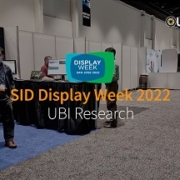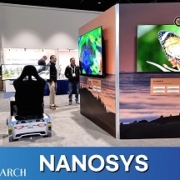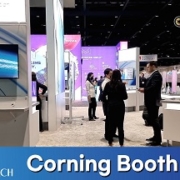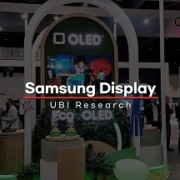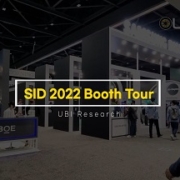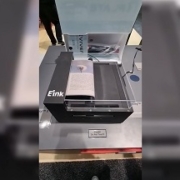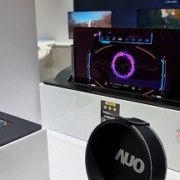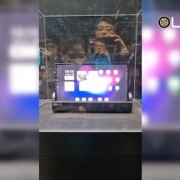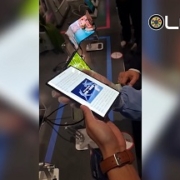What is the future change of WRGB OLED to respond to QD-OLED?
2As Samsung Display’s QD-OLED begins to be applied to TVs and monitors in earnest in 2022, technological changes are being detected for LG Display’s WRGB OLED, which has been leading the large OLED market.
LG Display’s WRGB OLED has produced a WBC structure consisting of two blue layers and one red+yellow green layer in Paju by the end of 2021, and a WBE structure consisting of two blue layers and one red+green+yellow green layer in Guangzhou. Deuterium substitution technology was applied to the blue of the WBE structure.
Since 2022, LG Display has stopped producing WBC panels from its Paju line and has been producing ‘OLED.EX’ panels with deuterium substitution technology applied additionally to green of WBE produced in Guangzhou.

<Photo of OLED.EX presented by LG Display at the 2022 OLED Korea Conference>
At SID 2022, LG Display also exhibited a large OLED panel with micro lens array technology. Micro lens array technology was applied to Samsung Electronics’ ‘Galaxy S Ultra’ series, and it is the first technology applied to large OLEDs. LG Display is known to expect a 20% improvement in luminance compared to the previous one by applying micro lens array technology. Panels which micro lens array technology is applied are expected to be produced in Paju from the second half of this year.
Lastly, it is known that LG Display is developing a structure in which yellow green is removed from WRGB OLED. By eliminating yellow green, material and processing costs can be saved, and color gamut is expected to be improved.
Attention is paid to how LG Display’s WRGB OLED will evolve to compete against QD-OLED.

<OLED panel with micro lens array technology exhibited by LG Display at SID 2022>


